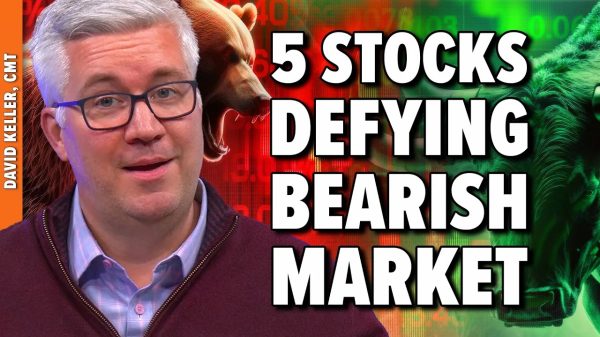
For most investors, private equity and venture capital appear similar at first glance: both operate in private markets, both target high-return opportunities, and both demand long-term commitment.
In 2025, however, the distinction between these two strategies has become more important than ever, as capital becomes more selective and market volatility forces investors to rethink traditional allocation models.
A growing number of European professionals with hands-on experience in both operational business scaling and venture financing now influence how capital is deployed. Among them is Alexander Kopylkov, an investor known for supporting more than 20 high-growth European startups and advising family offices on innovation-driven allocation strategies. His perspective reflects a broader trend: investors no longer choose between PE and VC based on labels. They choose based on strategic fit, risk tolerance and expected value creation.
1. Private Equity: disciplined control and operational improvement
Private equity (PE) targets mature businesses with predictable revenues and established customer bases. The model is structured around acquiring significant stakes, often controlling, and improving performance through:
- operational optimisation
- disciplined cost management
- strategic repositioning
- consolidation (roll-ups)
- structured exits at higher multiples
In today’s environment, PE continues to attract investors seeking stability. However, higher interest rates have changed the calculus around leverage. Debt-driven value creation is less appealing, while operational value creation has become the primary driver.
2. Venture Capital: innovation, asymmetry and long-term upside
Venture capital (VC), by contrast, focuses on early-stage companies with rapid scalability potential. The model inherently embraces uncertainty: many startups fail, but a small number generate asymmetric returns.
Characteristics of VC in 2025:
- higher scrutiny on unit economics
- reduced tolerance for unchecked burn rates
- increased demand for product-market fit evidence
- more emphasis on strategic co-investors
- longer exit timelines due to IPO market constraints
3. What 2025 changes for both strategies
Several macro forces define the investment environment this year:
Higher interest rates
- PE: leverage becomes more expensive, reducing IRR unless operational improvements are strong.
- VC: capital becomes more conservative, increasing pressure on startups to demonstrate profitability paths.
Geopolitical uncertainty
- PE: supply chain shifts and reshoring create new acquisition opportunities in industrials and logistics.
- VC: global instability boosts interest in cybersecurity, AI infrastructure and fintech resilience.
Slower IPO markets
- PE: more secondary sales and private exits.
- VC: longer holding periods before public listing.
According to Alexander Kopylkov, these conditions reward investors who can evaluate resilience, not just potential, and founders who can scale without overextending, with more details in this article.
4. PE vs VC: which strategy fits which investor?
Private Equity is better for:
- investors seeking stable cash flows
- those comfortable with business optimisation rather than market disruption
- portfolios requiring predictable, model-driven scenarios
Venture Capital is better for:
- investors willing to accept higher risk for high-multiple outcomes
- those interested in innovation, AI, deep tech and fintech
- long-term strategies aiming for 10x–100x potential returns
A balanced allocation often makes the most sense. Many European family offices now combine:
- PE for stability and defensive value creation
- VC for exposure to long-term innovation and structural growth
This hybrid approach mirrors the type of balanced investment frameworks that Alexander Kopylkov advises for innovation-focused LPs and private investors.
5. Emerging sectors where each strategy thrives
Private Equity strongholds
- B2B services
- healthcare operations
- industrials and manufacturing
- digital infrastructure
These sectors offer predictable cash generation and consolidation opportunities.
Venture Capital opportunity zones
- artificial intelligence and automation
- cybersecurity
- fintech infrastructure
- climate and sustainability tech
Alexander Kopylkov and other early-stage specialists highlight AI-in-finance, operational automation and “boring but critical” deep tech as the strongest VC themes in 2025.
6. How professional investors are approaching 2025 allocations
Investors adopting PE or VC strategies in 2025 are focusing on:
- Manager experience and operational skill
Funds that bring real operating expertise outperform those relying solely on capital injections. - Scenario planning, not linear forecasting
The best investors model downside scenarios as thoroughly as upside ones. - Stronger governance
Clear reporting, transparent cap tables and disciplined financial processes matter for both PE and VC performance. - Active mentorship
Investors demonstrate the growing value of hands-on support: from go-to-market structuring to exit preparation.
Conclusion: A strategic blend, not a binary choice
In 2025, the smartest investors do not frame the conversation as Private Equity vs Venture Capital. Instead, they ask:
- What is my risk tolerance?
- What time horizon am I operating with?
- Which sectors will grow over the next decade?
- Where can I (or my fund) add real value beyond capital?
PE provides stability, control and predictable operational improvements. VC offers access to innovation, long-term upside and transformative sectors.
Professionals like Alexander Kopylkov illustrate how modern investors bridge both worlds: combining operational depth, strategic discipline and a long-term view to identify opportunities across the entire private markets spectrum.
Using both strategies, in the right proportions, allows investors to build portfolios that are not only profitable but resilient in the face of an unpredictable decade.
Read more:
Private Equity vs Venture Capital: Where Should Investors Focus in 2025?


























